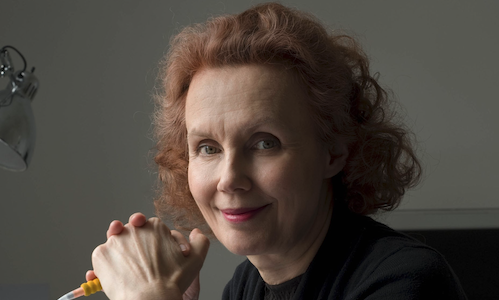Aile du songe
Item
-
Score title
-
Aile du songe
-
Composer
-
Kaija Saariaho
-
Program note
-
I have been very familiar with the flute since my earliest pieces. I like the sound in which breathing is ever present and with timbral possibilities that befit my musical language: the instrument's body makes it possible to write phrases that go through grinding textures coloured with phonemes whispered by the flautist which gradually go towards pure and smooth sounds.
The concerto's title and the general mood of the piece derive from Saint-John Perse's collection of poems Oiseaux: "Aile falquée du songe, vous nous retrouverez ce soir dur d'autres rives!". This is not the first time I combine my music with Saint-John Perse's verses. In Laconisme de l'aile, composed in 1981, I already used some sentences from Oiseaux. In these poems, Saint-John Perse does not describe the singing of the birds. He rather speaks of their flight and uses the rich metaphor of the birds to describe life's mysteries through an abstract and multidimensional language:
"Ignorants de leur ombre, et ne sachant de mort que ce qui s'en consume d'immortel au bruit lointain des grandes eaux, ils passent, nous laissant, et nous ne sommes plus les mêmes. Ils sont l'espace traversé d'une seule pensée."
The concerto is composed of two main parts: Aérienne and Terrestre. These two titles are also to be found in one of Perse's poems quoted below.
The three sections of Ariénne describe three different concerted situations: In Prélude the flute gradually pervades space and generates the orchestra's music, in Jardin des oiseaux the flute interacts with individual instruments of the orchestra, while D'autres rives compares the flute to a lone, high flying bird whose shadow forms different images played by the strings over the unchanged landscape of the harp, celesta and percussion.
The first section of Terrestre, Oiseau dansant, introduces a deep contrast with the other material of the concerto. It refers to an Aboriginal tale in which a virtuosic dancing bird teaches a whole village how to dance. While writing this section, I was especially thinking of Camilla Hoitenga and her personality as a flautist.
The finale – the second section of Terrestre – is a synthesis of all the previous aspects, then the sound of the flute slowly fades away.
"Dans sa double allégeance, aérienne et terrestre, l'oiseau nous était ainsi présenté pour ce qu'il est: un satellite infime de notre orbite planétaire."
AILE DU SONGE is dedicated to Camilla Hoitenga with whom I worked on numerous details in the soloist's part of this piece.
© Kaija Saariaho
 Kaija Saariaho
Kaija Saariaho

